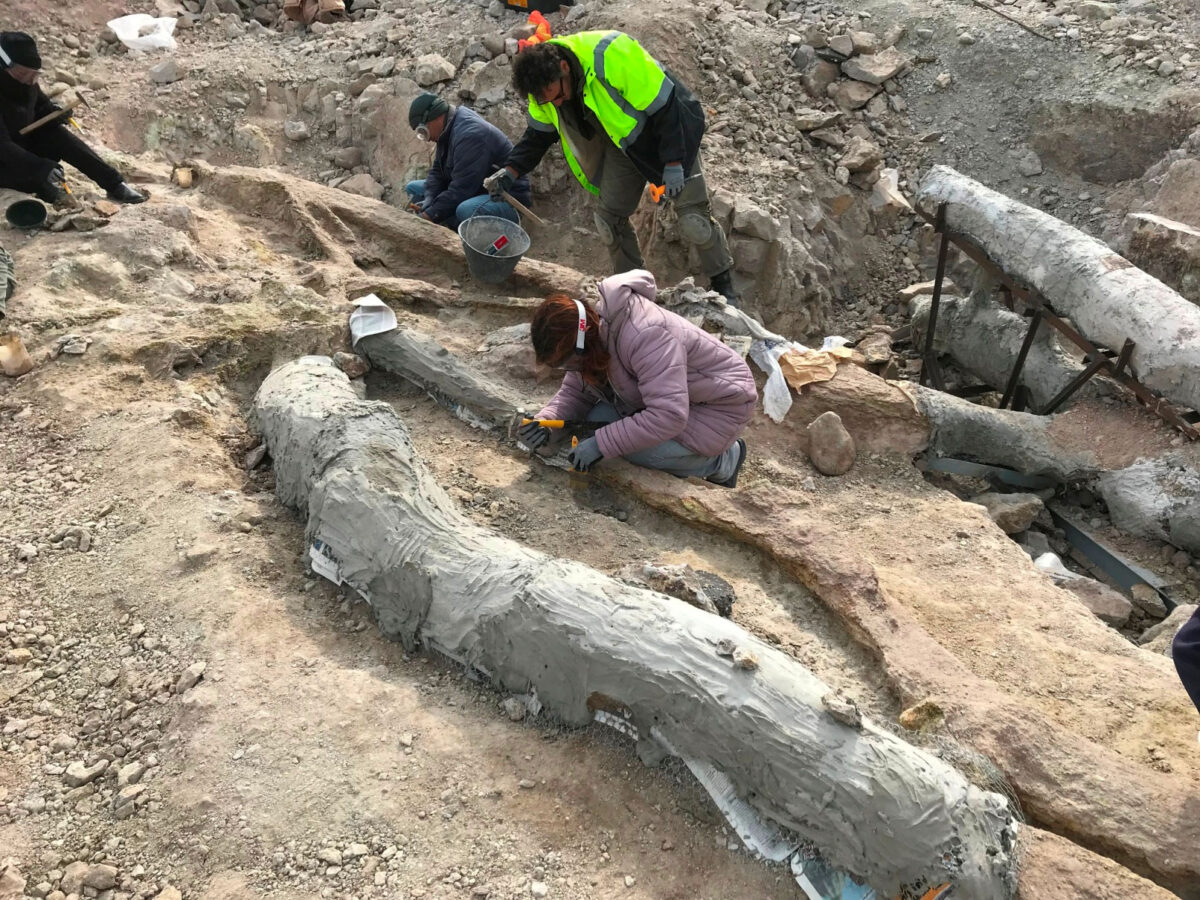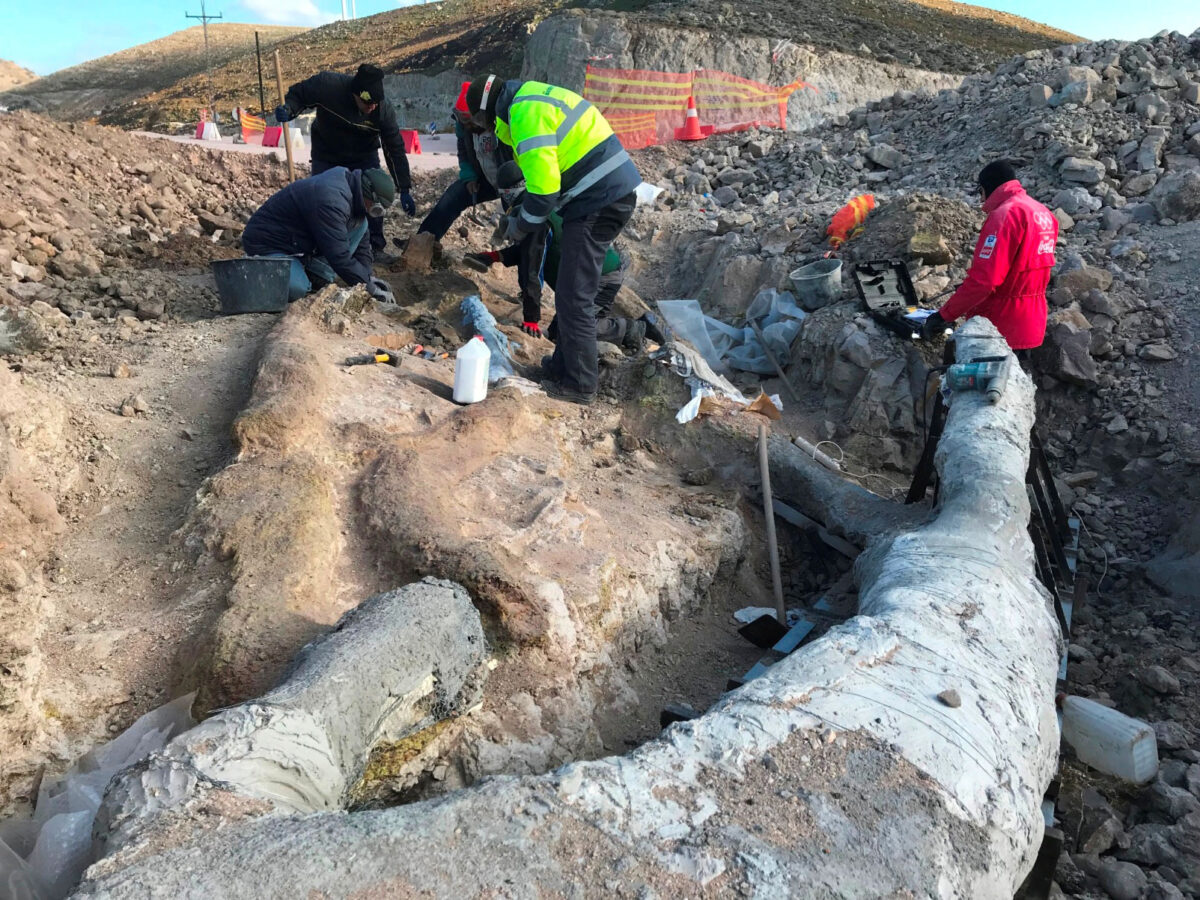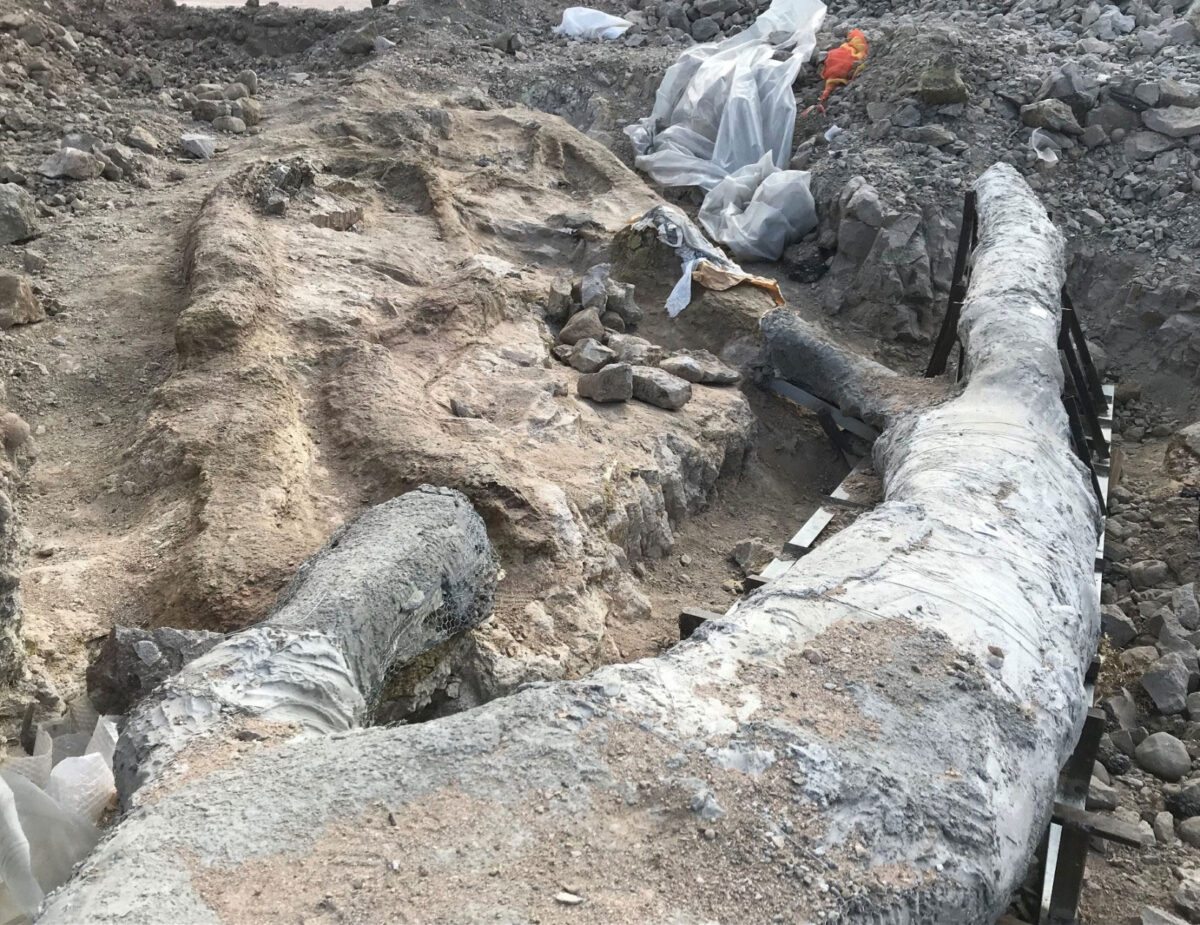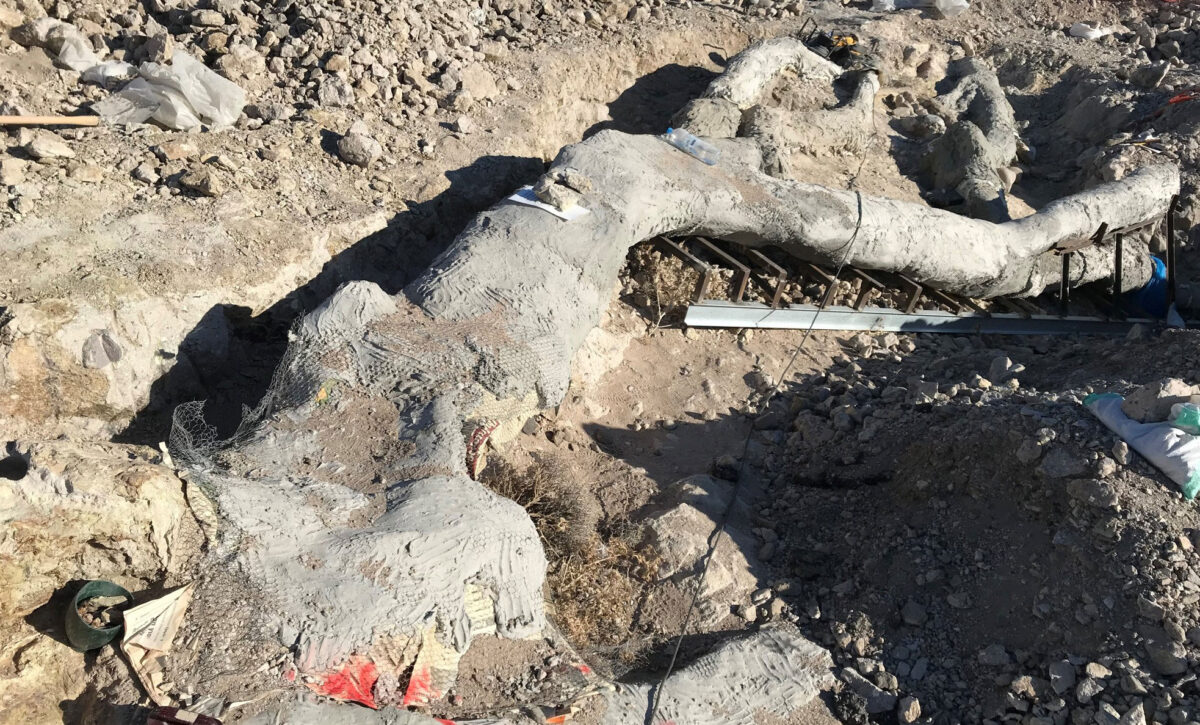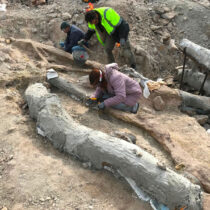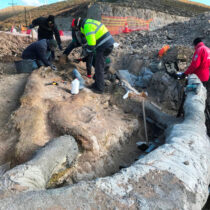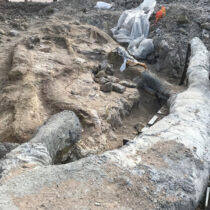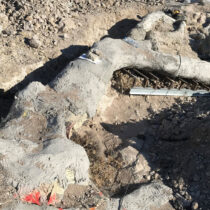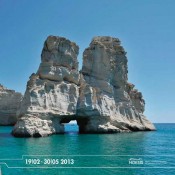A large fossilized tree preserved intact with its branches and roots was recently found during rescue excavations carried out along the Kalloni to Sigri highway.
This is an extremely rare find, as it is the first time that a fossiized tree with its branches has been found, since the Natural History Museum of the Lesvos Petrified Forest began excavations in the region of Western Lesvos in 1995.
The rescue operations conducted by the Natural History Museum of the Lesvos Petrified Forest along the Kalloni – Sigri highway have since 2018 brought to light an impressively large number of fossilized trunks and fossil leaf beds in the road section crossing the protected region of the petrified forest from Antissa to Sigri. This year was full of surprises as new fossiliferous sites were added to existing ones, putting together piece by piece the puzzle of the subtropical forest. A large number of fossilized trunks were located, both in recumbent positions and standing, while important findings are still coming to light without such a trunk having been found to date with branches of this scale and dimensions.
The fossilized trunk is preserved almost intact in a bed of fine-grained volcanic ash. The fine-grained volcanic materials covered the tree’s trunk, branches and roots and kept them intact.
The tree is still in its original spot and it seems that the violence of the volcanic eruption caused it to fall to the ground where it was covered by a thick layer of volcanic ash and then fossilized. A large number of leaves of fruit trees was found in the same place, originating from the plants of the subtropical forest of Lesvos 20 million years ago. Another important fact is the trunk’s orientation that comes as evidence of a second significant volcano other than that of Vatousa which seems to have contributed to the creation of the petrified forest.
The discovery of this important find was made during demolition work on the old asphalt paving of the Kalloni to Sigri road next to its junction leading to the Park of the Petrified Forest.
Since the discovery three weeks ago, the entire staff of the Natural History Museum, engaged in excavating and conserving the fossils, has been working intensively to complete the excavations in uncovering the tree branches and safely preserve the find. A special splint was made round the tree’s trunk and branches for protection. Work has also been completed on constructing a special metal grate to allow the find’s transfer to a nearby site. Meanwhile AKTOR construction company has designed a special square on an adjacent site to accommodate the find and so complete the highway’s construction.
This is without a doubt a unique find that constitutes one of the most important fossil discoveries in the region of the Petrified Forest. To date, no similar fossilized tree trunk with intact branches has been found, preserved up to the present day in such good condition.
In the coming months the new find is expected to be highlighted in its new location, making it visible and accessible both to the locals and visitors to the region.
